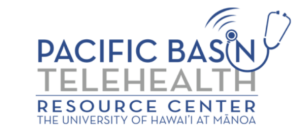When travel borders closed in March 2020, thousands of American Samoan residents were stranded outside of the territory. However, the American Samoa Government (ASG) Repatriation Program came about as a way to allow residents to return safely. Through the program, residents participated in supervised quarantine for 10 to 14 days in Honolulu.
After quarantining in Honolulu, residents could return to American Samoa. Each repatriation flight transported between 180-260 residents. However, quarantine did not end upon arrival. Instead, returning residents continued supervised quarantine for another 10-14 days. The overall goal of the ASG Repatriation Program was to keep American Samoa COVID-19 free through the Pre-Travel Hawaiʻi Quarantine Program. One of the main objectives for the program was to create and maintain a safe travel bubble for all returning residents of American Samoa.
Physically isolating can take its toll, mentally and physically. Although participants in these programs were physically isolated, many of these residents were given the opportunity to reconnect using the affordances of telehealth.
Focusing on the physical and mental health of residents and staff who were restricted within the walls of the quarantine site, staff developed various educational, health and cultural programs delivered via Zoom to keep residents engaged as a community and to encourage them to “minoi minoi” or to move around. One of the most popular programs: tele-exercise.
As part of the tele-exercise program planning and design, the medical team facilitated discussions and brainstorming sessions regarding Zoom physical health activities. Through Zoom, the team brought together travelers and various support and community organizations, including the Pacific Basin Telehealth Resource Center (PBTRC). Under the guidance of the quarantine lead physician and in-house medical staff, quarantine residents were able to guide their own participation by coming up with an exercise program and finding instructors among themselves. Quarantine residents and staff would either join from their balcony, right outside their door to maintain physical distance guidelines or from inside their rooms via Zoom. This ensured all COVID-19 safety protocols were followed to maintain the integrity of the travel bubble.
Participants could choose from a diverse set of volunteer tele-exercise instructors. These included church ministers, military personnel, physical fitness (Zumba and yoga) instructors, college students, nurses and doctors, dancers and entertainers and community members in general. Out-of-state instructors from Utah, American Samoa and other locations also volunteered their time in the spirit of tautua (service) and community support. Residents liked the program so much that, thanks to their requests, it grew from a once-daily program to twice per day. As it continued to expand, quarantine residents asked family members to join as part of their support systems. The program expanded even more and opened up to those who were referred from American Samoa to Hawaiʻi for medical appointments and were also confined in their hotel rooms.
The people who were referred took advantage of the opportunity and logged in for the tele-exercise sessions not only to participate in the physical aspect but also to be a part of the community. The tele-exercise program was implemented on both sides of the supervised quarantine in Hawaiʻi and American Samoa and became a highlight of the ASG Repatriation Program. By August 30, 2020, after eight flights and returning over 2000 residents, the ASG transitioned from repatriation to the Safe Travels American Samoa program on limited commercial flights to the islands.
The PBTRC has been a key supporting organization for the ASG Repatriation Program since it began. PBTRC provided Zoom and assistive technology training for the quarantine residents and staff as well as technical assistance with community health planning and support for program implementation via telehealth.
Telehealth offers many benefits through the innovative use of audio and video technology. It expands access to care, allowing individuals to meet with health professionals from wherever they are, and reduces disease exposure, minimizing the possibility of transmission of the virus through physical contact. Through the tele-exercise program as part of the ASG Repatriation Program, telehealth made it possible for returning residents to stay physically fit and socially connected.

